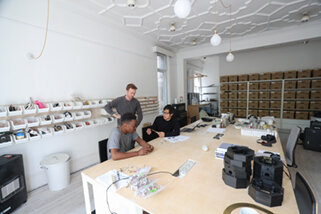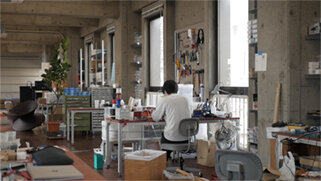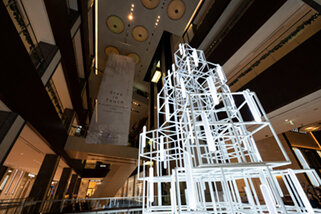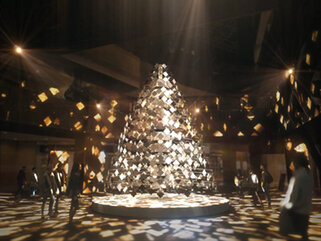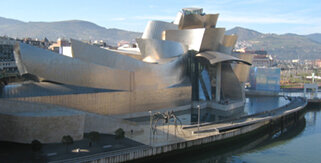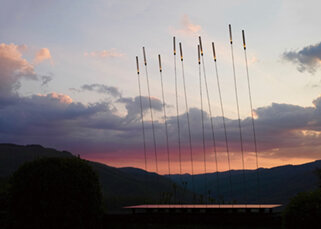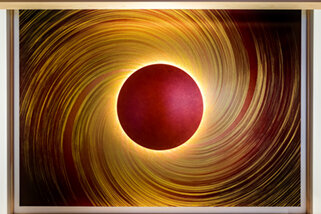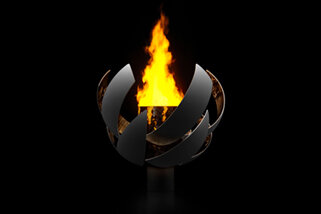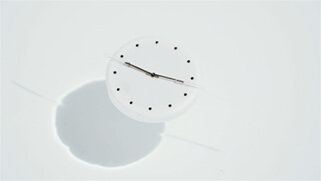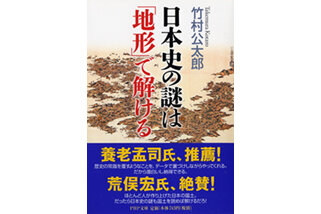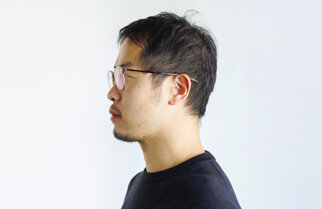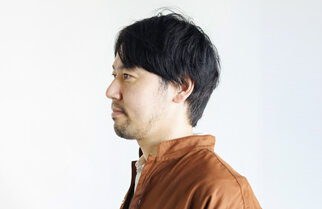
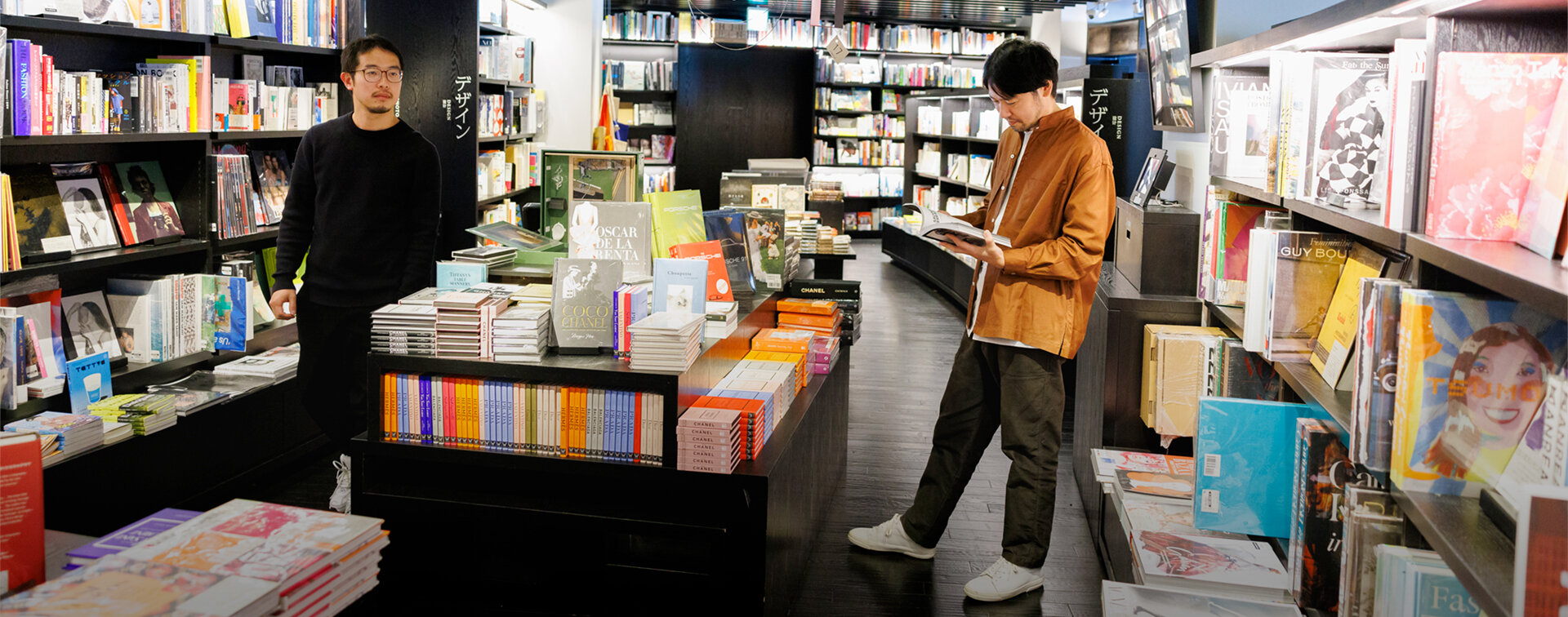
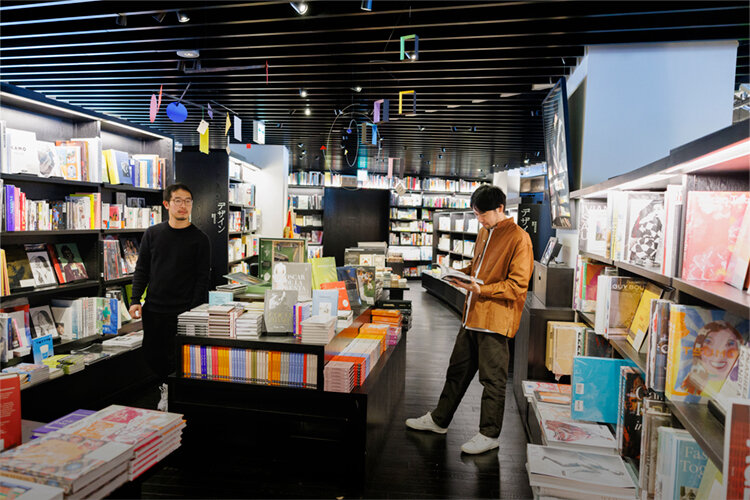
INTERVIEW
142
Hideki Yoshimoto × Shohei TakeiDesign Engineer × Engineer
Discovering the Vernacular Roppongi from an Engineering Perspective
Make things that bring pride to the city. (Takei)
Try to capture the "rhythm" that repeats over a long period of time. (Yoshimoto)
Shohei Takei of nomena, who was in charge of the mechanical design of the Tokyo Olympic and Paralympic cauldron, and Hideki Yoshimoto of Tangent, who is based in London and Tokyo and provides designs to luxury brands such as "Hermes." They have something in common; their creation is based on engineering, and also they are active in the fields of design and art. In the Christmas season of 2022, the trees they created in Roppongi and Nagoya, respectively, made a spectacular appearance in the city. They talked about the strengths of working on a wide range of expressions as engineers and their commitment from various angles.
The production environment in London was a culture shock.
Shohei TakeiActually, when I was a student, I made a near miss with Yoshimoto-san on a program at the University of Tokyo called "i.school."
Hideki YoshimotoWe started talking after we became independent and met each other in Salone del Mobile in Milan.
TakeiIn 2016, when I went to London for work, I went to Yoshimoto-san's studio and had a drink, and then missed the last train and stayed overnight (laughs).
YoshimotoWe put out a table in the garden and got drank.
TakeiThat experience was a culture shock. Yoshimoto-san had a large studio where several projects were underway simultaneously. There were some interns from RCA (Royal College of Art), and I got the impression that it was a very active studio. That place was originally a monastery dormitory, wasn't it?
Tangent studio
The 30-room building which used to be a dormitory for nuns was renovated as a studio.
YoshimotoThat's right. I used a large brick building away from the center of London as a studio.
TakeiI felt I also had to work hard, and moved to a larger studio in Tokyo after that, thanks to Yoshimoto-san.
nomena studio
A studio in Asakusa, Tokyo with functions such as an office and gallery. The space was designed by Domino Architects.
YoshimotoTakei-san has earned the trust of many people and made many large-scale works. He has a solid vision, the one like a craftsman's, and is creative at the same time. In order to realize various things, it is certainly necessary to have a large space.
The thought put into the Christmas tree that colors the city.
YoshimotoLast year, I was in charge of the production of the Christmas tree "Bon-Bon Blossom" on the West walk of Roppongi Hills. Due to the COVID-19 pandemic, we made a tree from dried flowers that were supposed to be discarded. This year we are making a jungle gym tree at Midland Square in Nagoya. Generally, a Christmas tree will make the city happy for a few weeks, but after midnight on December 26, it will be dismantled and trashed. From there, the city changes completely to the New Year mood. It is contradictory to the fact that SDGs and sustainability are being cried out so loudly. So, this year, the tree will be donated to three nursery schools in Nagoya as a real jungle gym after Christmas. I think it would be great if conversations about it were started like, "Actually, for Christmas of 2022 this jungle gym...," and could continue on for many years. There are 100 illuminated ornaments on the tree, which are collected at the time of dismantling and presented to customers by lottery.
Jungle gym tree
A Christmas tree in Midland Square in Nagoya, stacked cube frames of various sizes. The frame was made by TISWELL, a sports equipment and playground equipment manufacturer in Aichi Prefecture. Safety is also ensured so that children can actually use it as playground equipment after dismantling. Displayed until December 25, 2022.
TakeiI am helping to engineer the "Glitter in the air" Christmas tree that will be in Tokyo Midtown designed by nendo. Also, this year, WOW is working on the tree of Roppongi Hills West walk, which Yoshimoto-san was in charge of last year, and I am also involved in its engineering. So, I am honored to be the one who supports the Christmas tree in the Roppongi area behind the scenes (laughs). However, this was the first time I was involved in making a Christmas tree, and it was a very fresh experience. As Yoshimoto-san said, engineering is a craftsman-like approach, so we focused on making it safe first. In addition, we are taking care so as not to invoke tense feelings in the works. Ideally, we want to express something that is light and elegant, but also stands out.
Christmas tree of "Glitter in the air"
A Christmas tree designed by nendo at the basement first floor of Galleria in Tokyo Midtown. It is a cone-shaped tree with a height of 7.5 meters, and the parts that catch light move and sparkle from the wind generated by about 400 fans. The wind blows in multiple patterns, rising spirally and spreading like ripples, creating a sense of exhilaration for Christmas.

The value and responsibility of displaying works in places where people come and go.
YoshimotoThe Christmas trees are set up in public places where various people come and go. Some people may have lost their families due to the COVID-19 pandemic. Searching for unique and new expressions is naturally my mission, but at the same time, in my message and concept, I want to cherish being close to the flow of society.
TakeiAs an engineer, no matter where you exhibit, I don't want to create something that will be negative to society. When you major in engineering, you learn what an engineer thinks and how to develop the technology ethically, which is called "engineer ethics." I always work with an awareness of whether the development of technology is negatively affecting society. In particular, the fields of AI and robotics are developing at an accelerated pace, so if we do not think about the significance of human existence, we may lose sight of our purpose.
As a work placed in the city, I aim for it to become the "pride" of the city. I mainly work on memorable monuments, and there are not many things that are immediately useful. Even so, I think we can make them proud. For example, at the Guggenheim Museum Bilbao designed by Frank Gehry, there were many objections. People were saying it would ruin the cityscape and it was a wasting of money. However, when it was completed, it was visited by many people and became an important piece of post-modern architecture, and its perception changed. Although it is difficult to see the direct effects of works with cultural significance, I always have a desire to create something that pleases the residents and visitors.
Guggenheim Museum Bilbao
It opened in 1997 as a center of modern art in Bilbao, a city in the Basque Country of northern Spain. American architect Frank Gehry was in charge of the design. It is said to be one of the most important buildings of the modern architecture.
Capture technology from the creator's perspective.
YoshimotoTangent was founded in 2015 and has advocated for works that go back and forth between engineering and design. But for the first five years or so, I didn't use the latest technology, and the style was more like expression at the front, with a little programming and sensors in the background.
Takeinomena is the same. If we take the word technology as it is, it tends to create nuances like cutting-edge or changing society, but most of the things we deal with are technologies that are rather "dead." I am trying to create something that has never been seen before by combining things that are familiar to me. I am also interested in cutting-edge technology, but when I use such things, they tend to give a sense of smugness or power. I think that is one of the characteristics of our way of working with technology, which makes us slightly different from other engineers.
YoshimotoIn my case, the tide has changed a little over the past two or three years. It is not unrelated to the fact that I moved my base from London to Tokyo and returned to the University of Tokyo as a professor, so that I have more opportunities to engage in university research-level tech, such as advancing drone and AI system development. When we see such technology from the perspective of a designer or an artist, we can come up with ideas that scientists or engineers could never have conceived. If we can grow it well, we may be able to generate demand that has never existed before. At this point in my career, I could finally say with confidence that I am involved in both technology and design, and I find that interesting in itself. I have come to think that my role is to look at technology from a different vector, from the creator's point of view. Rather than aiming for efficiency, I value the way that is more exciting and pleasing.
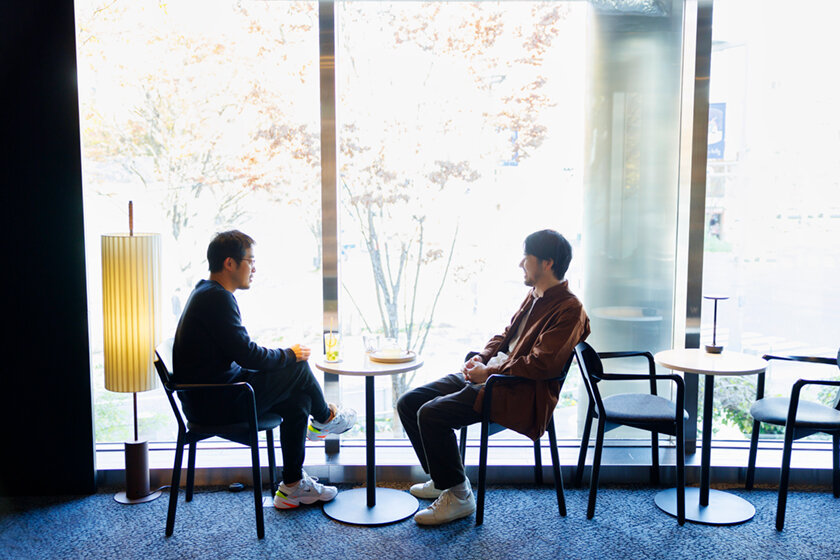
Where technology meets design.
YoshimotoThe monumental work in my career is my debut work, Inaho. It has already been nearly 10 years since it was presented, but I still receive many compliments on it, including an exhibition at this year's Roppongi Art Night . I also work on installation works like this, but recently I receive longer time frame requests, such as counseling on town development.
Inaho
An installation inspired by ears of rice swaying in the wind. When a person passes in front, a sensor detects the motion and the idle object shines and begins to sway. In 2013, it was awarded the first Lexus Design Award. The image is from Roppongi Art Night 2022.
TANGENT INAHO
The area I want to focus on right now is traditional crafts. One of the projects that led to this was the gold leaf wall art called "Gachirin," which was produced at a shukubo called "Ekoin" in Koyasan. Together with Hakuichi, a gold leaf brand from Kanazawa, we created a work of about 7 meters wide to decorate the alcove of the suite room. Ekoin has a history of 1,200 years, and in shukubo, sliding doors and furniture from several hundred years ago are still used daily, not just as part of a showcase. I feel the gradual flow of time in Buddhism, and this work, like fusuma, may continue to exist 200 or 300 years from now. I feel that I can create a new realm by combining things that are moving in the flow of time that transcends human life with design and technology.
Gachirin
In 2001, the wall art of Kanazawa leaf was created in the special room of the temple lodge "Ekoin" in Koyasan. Inspired by the Shingon esoteric Buddhist meditation method called "Moon disc meditation," the wall is filled with a whirlpool of gold leaf welling up from a round circle, expressing a scenery that spreads to another dimension.
TakeiI am always conscious of creating pride, and the Olympic and Paralympic cauldron of the Tokyo Olympic and Paralympic Games is truly symbolic. I think I was lucky to be involved in something that represents the country. In the process of creating something that was so big and meaningful, there were naturally many stakeholders, and we had to proceed with various things carefully. Above all, I wanted to make it something that I couldn't have made without Japan. Of course, it is largely due to the wonderful design of nendo, but in addition, Toyota's world-class press machine is used for the exterior panels, which can be said to be the crystallization of Japanese manufacturing. It was a great experience for me to be involved in this process from the standpoint of mechanical design.
Tokyo Olympic and Paralympic cauldron
nendo inc. was in charge of the design with the sun as a motif. nomena was in charge of the mechanical design to achieve the smooth movement of the 10 exterior panels that opened like petals and lit up in the center.
photo:Hiroshi Iwasaki
Recently, we have been receiving an increasing number of orders not only for technical engineering assistance, but also for works that give shape to our own expressions. Seiko's " Tokei no Shasho" series is a work that focuses on the preciousness of the fact that such tactile machines (watches) still exist today, even as more and more people check the time on their smartphones. An impression was created from the image of how the watch behaves when it forgets its role in keeping time. What made me happy was that the engineers and designers at Seiko said, "This is an expression that we, who have been making watches for a long time, could never have imagined". I personally feel that I was able to approach the fun and fascination of watches that they had not noticed, invoking their pride.
Tokei no Shasho
The installation consists of three works that utilize the internal mechanism (movement) of Seiko's wristwatch called "metronome watch" which accomplished free and smooth movement of the hands, and the voice digital watch that uses sound to indicate time. In October 2022, it was exhibited at "Karakuri no Mori," a special exhibition of Seiko Seed, the information center of Seiko Watch, which opened in Harajuku.

The freedom of Roppongi, which seems to allow for any kind of change.
TakeiIt may be inevitable that cities around the world have similar impressions as a result of globalization, but it is important for the people who live in the city and those who go there every day to be proud of the place. There is a word that is often used in architecture called "vernacular," which means "indigenous" or "native." There are many interesting points to be found in architecture using local materials, and it is easy to become attached to it. Above all, the cost is low both economically and environmentally. It would be great if more and more vernacular-conscious things, not only buildings, were added to the city.
YoshimotoI don't know if this applies to what we're talking about, but when I got my doctorate, I chose rhythm as the theme. The same applies to repetitions, waves that come and go, and the seasons go around, but since then, the phenomenon of rhythm has been at the root of my point of view. What I want to say is that, when you think your relationships are going well but you fight and make up... or UK's Brexit and the rise of nationalism seen in various countries, you can see a kind of rhythm when you look at these in a longer span. In the same way, as in the case of the period of rapid economic growth when people flocked to the city, the concept of regional revitalization was born. The mood of overconcentration became lousy, and it became cool to do what you like in the countryside. Therefore, when thinking about urban issues, it may be possible to change the way we see them by paying attention to the long term from a slightly different perspective.
Compared to Europe, Asian cities have messy urban planning, and I have the impression that buildings are built wherever they wish without much consideration. In a sense, Roppongi is a city that has a strong Asian feel, with high-rise buildings, small shops, alleys, and old-fashioned houses all around it. It may be difficult to predict how this cityscape will change 50 years from now, but I feel the degree of freedom will permit it no matter how it changes.
Analyze history and culture using engineering.
YoshimotoIf I were to do a project in Roppongi, I would like to involve people who have lived here for generations and know Roppongi well.
TakeiThere is certainly an image of Roppongi as a new and glittering city for our generation, but if you walk with a sense of vernacular (native), there are many place names like Nogizaka and Enma-zaka that remind you of history. Hidden in the glamor, this part is quietly less conspicuous, but I would like to get involved if there is an initiative to approach the deeper appeal of Roppongi.
YoshimotoTalking about place names, last year I had the opportunity to listen to Mr. Kotaro Takemura. He was a civil engineering scholar who served as a bureaucrat of the Ministry of Land, Infrastructure, Transport and Tourism, and I was very impressed by the geopolitical analysis of what the Shogunate had in mind when it built Edo. If you go back to the history of the land, you may understand logically why Roppongi became what it is now.
TakeiI have read Takemura-san's book, and the method of using civil engineering knowledge to decipher history is interesting. Even in discussing war, he hypothesized that a different route might actually have been taken, since the commonly accepted route of attack was difficult to take from a civil engineering standpoint. I feel that this is similar to an engineer's point of view.
The mysteries of Japanese history can be solved by "topography"
A history book by Kotaro Takemura, which deciphers why Kyoto became the capital from the perspective of infrastructure.
Yoshimoto-san, like me, has an eye for culture, and is a rare type of engineer. I like the traditional performing arts of rokyoku, and I tell people about it, but usually they don't listen to it (laughs). But when I told Yoshimoto-san about it when I met him in London, he was interested in it. It would be interesting if we could do something together from the perspective of "engineering culture."
YoshimotoTakei-san and I have a similar education, and I think we are very similar in terms of skill sets. The output may look similar from the outside, but I am quite aware of the differences. So, for example, if we try to work on the same subject separately, you may be able to see the difference in concrete terms.
TakeiI personally think it is a huge asset, because if the person who expresses is familiar with engineering, you can immediately try out ideas that come up and correct the trajectory. In that respect, it is interesting that Yoshimoto-san has a similar methodology to mine, but has a different perspective. It would be nice if someone give us a theme (laughs).
Location: Roppongi Tsutaya Books
Editor's thoughts
The two are likely to be perceived as "the same genre." Although they have never worked together, they are friends in private, and Takei-san once helped set up Yoshimoto-san's work. Since they are of the same generation and have similar skill sets, they have a common language, as well as there are many parts that can be understood without speaking, and I got the impression that they understand each other's differences and strengths objectively. It would be interesting if they created something with the same theme, and I would like to see it become a reality.(text_ikuko hyodo)
RANKING
ALL
CATEGORY




